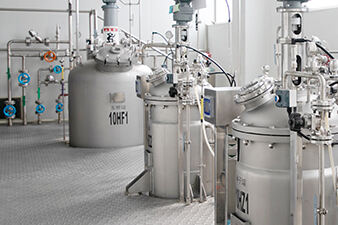Rising Market Demand for Speed in OEM Manufacturing
Across sectors like consumer electronics and automotive manufacturing, companies are seeing the need for production cycles that are about 34% quicker than what was standard back in 2020 according to Deloitte's latest report. Why? Products just don't stay relevant as long anymore, and customers want what they want right away. Factories that can keep up with these fast OEM delivery timelines tend to hold onto their customers better too, with some studies showing almost double the retention rate when they hit those tight market deadlines. The pressure to speed things up really matters for certain products that need government clearance before release or ones that must launch simultaneously across different countries around the world.
Scalable Production Capacity as a Competitive Edge
The ability to scale operations gives OEM partners the flexibility to change production levels by around 40% either way within a month's time frame, which helps when there are problems in the supply chain. Plants that produce over 10 million units each year typically see about 18 percent savings on each item because they can share engineering work across multiple projects and buy materials in larger quantities. Brands bringing out new products where demand fluctuates a lot find this kind of flexibility really important. Think about things like gadgets that sell well during certain seasons or medical equipment needed during health crises when nobody could predict the sudden need.
Case Study: 40% Faster Time-to-Market with a 10M+ Output OEM Partner
One consumer electronics firm managed to slash their headphone development timeline down from 14 long months to just 8.4 months after teaming up with an OEM running no fewer than 62 parallel assembly lines across multiple facilities. Engineering departments working together were able to reduce the number of prototype versions needed by about half when they started integrating CAD and CAM systems in real time during design phases. At the same time, standardized testing procedures helped eliminate over 300 hours worth of duplicate compliance tests that had been wasting valuable time before. Plus, because the OEM already had established supply agreements with polymer manufacturers in Asia, getting components into production got sped up by around 22 days compared to previous methods.
Trend: Growing Preference for OEMs with 10M+ Annual Production Capability
58% of procurement specialists now mandate minimum annual OEM capacity thresholds, up from 29% in 2019 (Gartner 2024). This shift reflects the compound advantage of scale-proven partners: facilities producing 8–12M units annually demonstrate 37% better defect rate consistency versus smaller operations, alongside 24/7 dedicated production lines for priority clients.
Demand Forecasting and Real-Time Production Planning
Using Predictive Analytics for Accurate Volume Planning
Today's OEM manufacturing partners are turning to machine learning algorithms to look at past sales trends, check what materials are available, and track how demand changes with the seasons. According to the 2023 Material Capacity Report, companies that use predictive analytics cut down on production planning mistakes by around 30%, all while keeping their output schedules on track about 98% of the time. When manufacturers compare what distributors predict will happen with actual point-of-sale data coming in real time, they can actually move stock to different regions ahead of time, sometimes weeks before big order surges hit. This gives them a real advantage when trying to meet customer needs without overproducing or running short.
Balancing Capacity Utilization Against Market Volatility
The ability to allocate capacity flexibly is what sets apart the best companies from those stuck with limited options when supply chains hit turbulence. Many leading manufacturers keep around 15 to 20 percent extra space in their operations just for emergencies, while others have adopted modular production setups that let them crank out particular products faster when needed. Take the chip crisis back in 2022 as an example. The big players managed to shift about 40% of their plastic injection molding capabilities over to medical equipment makers in just three days flat. They pulled this off using something called dynamic resource mapping, which basically means they can move resources around quickly based on where demand spikes unexpectedly.
Real-Time Scheduling and Visibility in High-Volume OEM Lines
Control towers in the cloud give manufacturers constant visibility over their massive production systems, often handling millions of units each year. Take one major automotive parts maker as an example they cut down on $2.8 million worth of rush shipping expenses once they put in place smart workflow tracking tools powered by IoT technology. These systems automatically adjust production orders when shipments get held up, switch machines around when something breaks down unexpectedly, and keep everyone updated on delivery times through all the different client interfaces at the same time. The benefit? Procurement staff can find alternative suppliers much quicker now about eight to twelve hours ahead of schedule compared to old fashioned weekly reports that used to be the norm.
Operational Efficiency: Eliminating Delays in OEM Production
Lean Manufacturing Principles in High-Capacity OEM Facilities
High-volume OEM manufacturers achieve 18–22% faster cycle times by implementing lean principles like value stream mapping and 5S methodology. A 2024 study of manufacturing flexibility strategies identifies three core operational levers proven to minimize delays:
| Strategy | Waste Reduction | Capacity Impact |
|---|---|---|
| Setup time optimization | 35–50% | Enables smaller batch runs |
| Cross-trained workforce | 28% faster changeovers | Reduces idle time |
| Real-time WIP tracking | 40% fewer defects | Prevents rework bottlenecks |
Automation’s Role in Reducing Bottlenecks and Increasing Throughput
Automated assembly lines with IoT sensors prevent 92% of production stoppages through predictive maintenance alerts. When combined with lean workflows, robotics achieve 24/7 utilization rates exceeding 85% in tier-1 OEM facilities—37% higher than manual processes.
Navigating the Risks of Overcapacity vs. Underutilization
Leading OEMs maintain 70–80% baseline capacity utilization, reserving 20% for demand spikes. Advanced analytics forecast material requirements with 94% accuracy, helping manufacturers avoid the $1.2M/month cost of idle equipment while preventing stockouts that delay 12% of orders.
AI and Automation: Powering Responsive OEM Supply Chains
Integrating Automation for Consistent, Scalable Output
OEM manufacturing plants these days rely heavily on robots and AI controlled machines to keep running non stop throughout the day and night. This cuts down on those pesky delays that happen when humans have to step in manually. The numbers speak for themselves really. Automated systems maintain around 99.8% consistency between different production runs even when making over half a million units at a time. That means factories can grow their output without losing quality control. According to some research from Kaizen Institute back in 2024, such setups cut down mistakes made by people by about two thirds compared to old school methods. Plus there's something pretty cool about how modern equipment can switch between different products so fast. Most plants report being able to completely rearrange their assembly lines within just 90 minutes or less when they need to start producing something new.
AI-Driven Forecasting and Inventory Tracking
Modern machine learning systems look at all sorts of data points when predicting what customers will want next month. They analyze how long suppliers take to deliver goods, track what distributors are selling, and even factor in things like political tensions that might affect supply chains. The results? Demand forecasts that hit around 92% accuracy mark most of the time. According to a recent IBM study from 2024 looking at big manufacturing operations, companies using AI for these predictions saw their forecasting mistakes drop between 30 to 50 percent. Logistics expenses also went down by about 40% on average. What's really impressive is how these smart systems handle day-to-day operations. They tweak purchase orders and rearrange warehouse stock without human intervention, keeping inventory records accurate over 95% of the time even when there are sudden shortages or unexpected surges in customer demand.
Enhancing End-to-End Responsiveness Through Smart Technologies
Traceability systems powered by IoT and component tracking using blockchain tech give companies eyes on everything happening throughout their entire supply chains. Take what happened during last year's port strike when a consumer electronics manufacturer faced shipment delays. The company used smart routing software to find alternative suppliers just four hours after problems started showing up, saving around $2.8 million that would have been lost otherwise. These kinds of technologies let factories put backup plans into action much faster than before. Most traditional operations take about 11 days to respond to disruptions, but with these new tools, manufacturers can often act within three days instead. That kind of speed makes all the difference when supply chain issues pop up unexpectedly.
Building Resilient Supply Chains for 10M+ Annual Output
Strategies to Maintain Reliability at Scale
For high volume OEM manufacturing, companies need to map out potential risks throughout every level of their production chain. Top manufacturers hit around 99.6% on time deliveries even when handling volumes over 10 million units. They do this by sourcing key parts from multiple suppliers, using artificial intelligence to sense demand changes and adjust production goals every hour, plus automatically adjusting safety stock levels when there are political or geographic issues affecting supply chains. According to recent findings from the Supply Chain Resilience Report in 2024, factories that monitor suppliers in real time saw a roughly 38% drop in late shipments compared to those sticking with traditional approaches. These improvements matter because timely deliveries keep customers happy and maintain market position.
Custom Global Distribution Programs for High-Volume OEM Clients
OEM partnerships that scale well implement solutions tailored to specific locations. These include setting up regional fulfillment centers with bonded storage areas, using smart algorithms to assign carriers that help reduce traffic at ports, and creating special lanes for urgent shipments that have already cleared customs. Leading manufacturers are starting to build carbon efficient routes right into how they plan distributions. This approach cuts down delivery times by around 15% while meeting those important ESG standards. For companies shipping more than two billion dollars worth of goods each year through OEM networks, these improvements make all the difference in staying competitive and compliant.
FAQ
What is the significance of high-capacity OEM manufacturing?
High-capacity OEM manufacturing provides the flexibility to rapidly scale production size, which is crucial for meeting sudden changes in market demand and handling supply chain interruptions.
How can predictive analytics improve OEM production planning?
Predictive analytics utilize machine learning to analyze sales trends and adjust production schedules, reducing planning mistakes by up to 30%, ensuring schedules are followed accurately 98% of the time.
What role does automation play in OEM supply chains?
Automation eliminates manual intervention and reduces delays, enabling OEM plants to maintain high consistency in production runs and quickly switch between different products when required.
Table of Contents
- Rising Market Demand for Speed in OEM Manufacturing
- Scalable Production Capacity as a Competitive Edge
- Case Study: 40% Faster Time-to-Market with a 10M+ Output OEM Partner
- Trend: Growing Preference for OEMs with 10M+ Annual Production Capability
- Demand Forecasting and Real-Time Production Planning
- Operational Efficiency: Eliminating Delays in OEM Production
- AI and Automation: Powering Responsive OEM Supply Chains
- Building Resilient Supply Chains for 10M+ Annual Output
- FAQ

